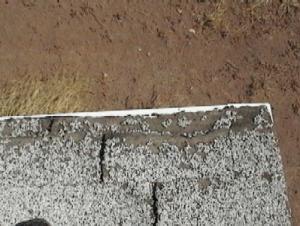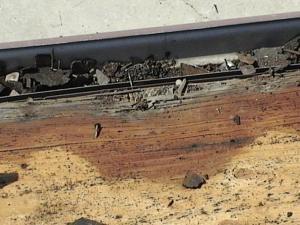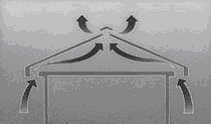|
|
Roof top ventilation, which is technically attic ventilation, is a highly important element of roofing. Proper ventilation will increase the longevity of your roof.
Poor ventilation will vastly shorten the life of the materials. We see this scenario daily, roof systems failing far short of the material life expectancy. Had a very small investment been made when the roof was installed, adding proper ventilation, the roof would have lasted much longer.
Proper attic ventilation will extend the life of a roof along with reducing problems as it helps balance, or minimize the temperature differential between the air in the attic and the air outside. Simply stated; Proper ventilation will remove moisture and heat from the attic. Details of problems from poor ventilation
Trapped moisture and heat can raise energy costs by putting a load on your AC. It can also cause ice dams, damage to roof system and structural components. Not to mention, personal items stored inside the attic where temperatures can easily reach 150° F (65° C).
Trapped moisture (more of a concern in humid regions) causes condensation. Condensation that forms inside an attic can come from use of tubs, showers, washing machines, clothes dryers dish washers, etc. In extreme cases condensation can be bad enough to be mistaken for a leaking roof. Other Condensation Concerns Deck Deflection the deck of the roof can warp, deteriorate, become spongy (soft)and very dangerous to walk on. The adhesives used in the plywood can deteriorate or Dry Rot. This can happen happen over the course of several years, extreme cases can develop this problem in as little as two years. This occurs because one side of plywood decking / sheeting needs be able to "breathe" by being exposed to circulating air....no circulation combined with condensation...wood cannot "breathe"Rust; In humid regions water vapor condenses first metal inside the attic; nails, plumbing straps, straps holding duct work etc. Any uncoated metal will rust over time, this could cause the metal to deteriorate to the point of failure. Rusted straps on duct work could break allowing it to fall on ceiling joists, or worse yet, through a suspended ceiling or drywall.Mold, Mildew, Fungi; While the health concern regarding mold has yet to be medically proven, mold, mildew and fungi WILL cause dry rot. Dry rot does not not remain in a localized area, it will spread and damage any lumber that is effected.Ice Dams Ice Dams occur when snow melts from the higher portion of the roof, then refreezes along the edges of the roof. Ice will buildup under the shingles causing damage, followed by leaks. Another more immediate problem arising from ice dams will occur when the water melting from the ridge of the roof puddles, or pools behind the ice dam where it will find it's way under the shingles, past the underlayment and into the attic. Ice dams can be avoided with proper ventilation, good insulation and air circulation, creating a "cool roof".
In some scenarios the architecture of the home will lead to ice dams being more prevalent on certain areas of the roof eves although there is proper ventilation and insulation. In cases such as this, the use of heat tape or heat element underlayment is useful and suggested along with installation of heat tape in the gutters and down spouts.

 Material DeteriorationRoofing materials are exposed to extreme elements on the outside. Manufacturers of the materials have accounted for the elements and constructed the materials accordingly. Extreme elements from under the materials, the attic, will not only break the materials down prematurely, but could also void the warranty from the manufacturer | |
Optimum VentilationProper ventilation of a roof is obviously crucial. There are a numerous types of attic vents on the market, some better than others. What is important is the components of the ventilation system. Without the proper components, the best vents on the market will be ineffective. Following is a break down, simplified, explaining the workings and components of proper ventilation.
Optimum ventilation systems consist of two types of vents. - Intake vents, located at the underside edge of the roof, known as the eaves. These vents allow fresh air to flow in the attic.
- Exhaust vents located near the ridge (top crest) or directly on the ridge line of the roof, depending on the vent type. These allow the air to leave the attic.

Both Intake and Exhaust vents MUST be in place, and unobstructed in order for the system to work. Properly implemented, the system uses the natural forces of wind pressure and thermal effect, referred to as the "Stack Effect" to circulate and exhaust the air in the attic. The rule of thumb is that properly vented attic air should never be more than 15 degrees hotter than the outside air. A temperature difference of greater than 15 degrees is an indication of additional heat sources, and/or an indication of poor attic ventilation.
As illustrated in the drawing above, the desired circulation of the air is along the bottom of the sheeting. Therefore the optimum system will draw air into the attic from the eaves of the roof through soffit vents. Circulate the air, removing condensation and hot air up the entire length of the sheeting, and out through the top, or ridge of the roof. | |
Vent TypesThere are many different types of roof vents on the market today. Following is a brief example and explanation on different type vents. | |
Ridge Ventilation
Ridge ventilation is a highly effective method of ventilation for certain types of roofs. Ridge ventilation completely and continuously vents the attic. It is also highly effective in cutting energy costs and prolonging the life of the roof. First introduced in the 1970's, manufacturers have gone to great lengths to improve ridge ventilation components.
Early ridge vents were constructed of galvanized metal or aluminum, while effective they are prone to bending and denting during installation and severe weather. Another drawback to the metal ridge vent was appearance, as it detracted from the roof's aesthetics. The late 70's early 80's the "curb appeal" of ones home, and subsequently the home's roof, became a factor, this led to the evolution of the ridge vent.
The shingle over vent appealed to the concerns of aesthetics, as the component of the vent itself was masked with a ridge cap to match the roof shingles. The early shingle over vents were rolled out over a slot cut along the ridge, fastened to the roof with nails, then the ridge cap shingle installed over the vent. This type of system is still in use today. Note: metal ridge vent components are still in existance and very effective for metal, tile and slate roofs, with roofing material installed over the vent.
A ridge ventilation system with similar attributes is the Fold a vent unfolded along the ridge, with ridge cap installed over the top of the vent system.
A new highly functional, aesthetically pleasing ridge ventilation system is comprised of individual components, the vent and ridge cap is one unit, which are installed along a slot cut along the ridge of the roof individually to form a continuous ridge ventilation system. While this is not an option for ALL roof designs, it is a preferred method for roofs where installation is possible.
 Ridge Crest Ridge ventilation system. |
|
|





